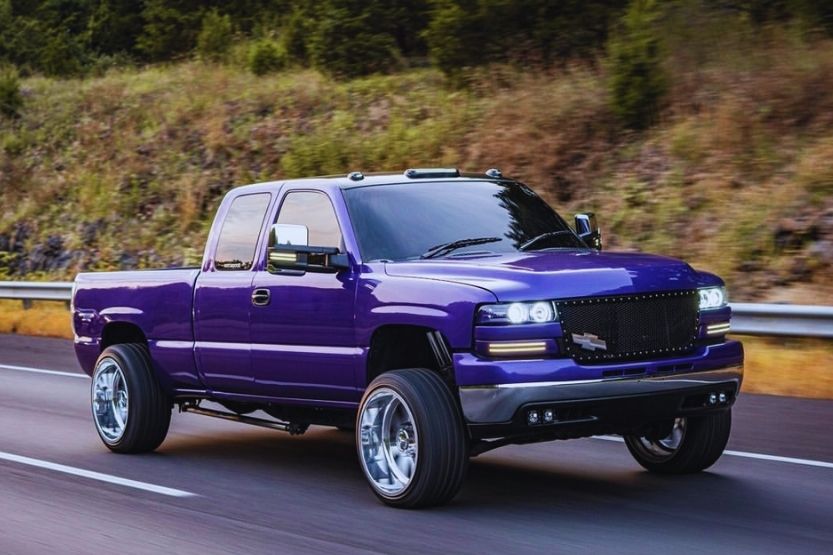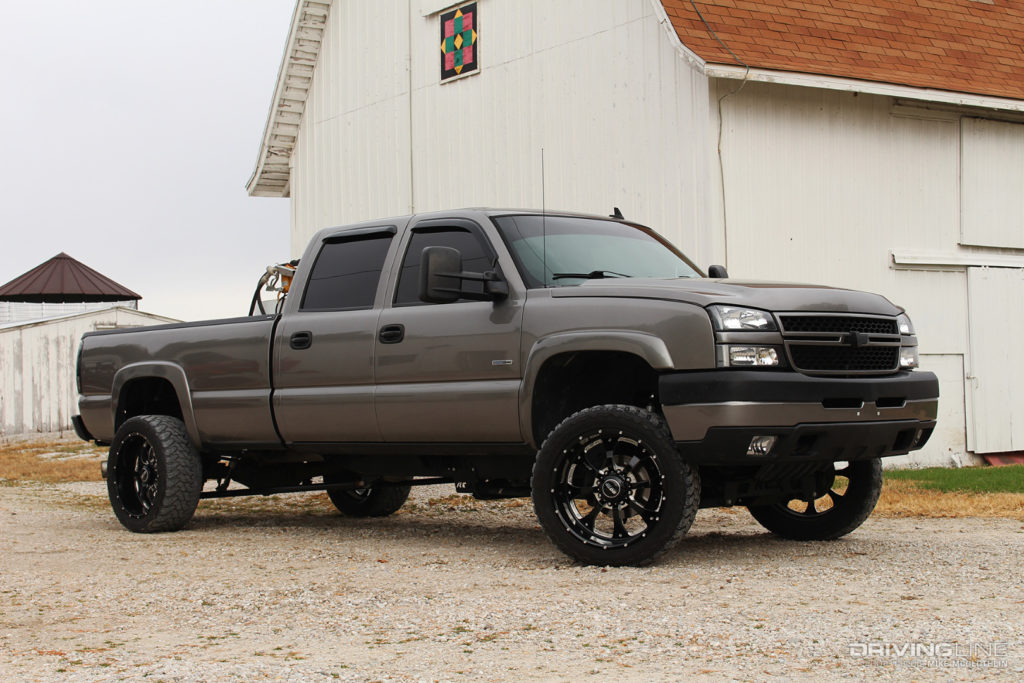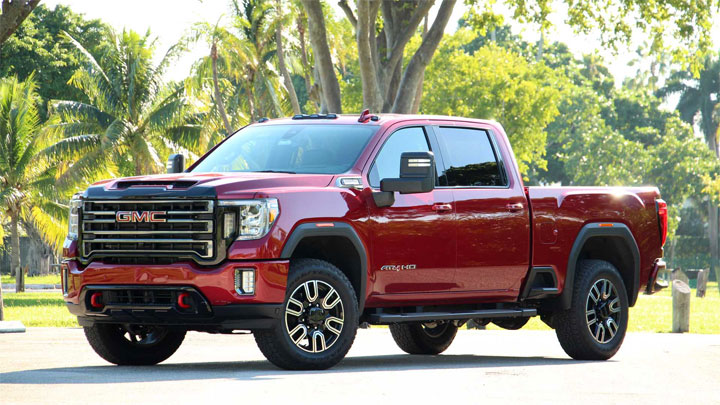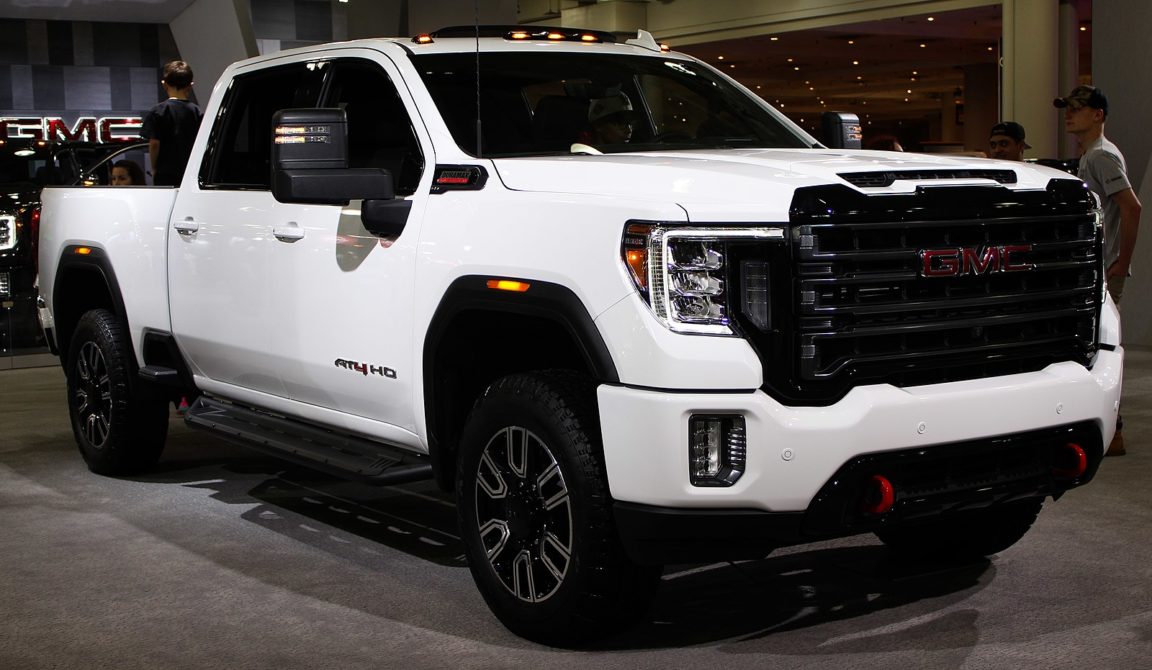When it comes to constructing the 6.6L Diesel engine that powers the GMC V8, DMAX, an Isuzu-GM joint venture, is to take the credit. The 6.2L and 6.5L Detroit engines were eventually succeeded by the GMC, which made its debut in 2001. In the market for light diesel vehicles, it proved to be an effective and formidable competitor.
The engine has been subjected to several changes and enhancements throughout its history to guarantee that GMC and Chevrolet pickup trucks have superior performance than their rivals.
RPO LB7 with engine code “1” was first released in 2001 and remained in production until the beginning of 2004. A high-pressure common continuous injection system, 32 valves, and an experimental composite construction on the cylinder head are all features of this layout.
The LLY, which has the engine code “2,” is a turbocharged 6.6-liter, 403.9-cubic-inch, 6,619-cc engine that was introduced in the middle of 2004 and remained in production until the conclusion of 2005. The LLY was the first effort made by General Motors to comply with pollution regulations on its diesel vehicles.
They decided to use a recently designed Garrett turbocharger that included a variable geometry vane system and fitted an EGR Valve to accomplish this objective. In the LB7 model, the company modified the valve covers so that access could be gained to the injectors without the removal of the valve covers.
This engine was installed in the Hummer H1 Alpha in 2006. The LMM with engine code “6” made its debut in the middle of 2007, and manufacturing of this model ceased at the beginning of the calendar year 2011. This engine was paired with the 6-speed Allison gearbox.
During the model years 2007–2010, the only GMC that was available was the LMM. A variant was used in the production of the Trident Iceni. If you’re seeking to purchase a used Chevy or GMC truck with a GMC engine, this portion of the article will inform you which years to avoid and which to opt for.
LGH Duramax years to avoid
- Years to avoid 2001 – 2009
- Best years 2010 – 2017
Above are the best 6.6 GMC years. In 2011, the GMC engine went through extensive revisions to conform to the newly enacted pollution standards. Even though it is more difficult to understand than its predecessors, it is more dependable. The model years 2011 through 2021 of the Duramax that were built are considered to be the safest to purchase.
LML Duramax years to avoid

- Years to avoid 2008 – 2010
- Best years 2011 – 2016
Because of a provision that allows for the injection of diesel exhaust fluid and urea, these engines are superior in terms of their ability to reduce pollutants. A fuel efficiency boost may also be achieved with the use of exhaust after-treatment when an after-treatment system is installed.
When engaging in activities like drag racing, off-roading, or sled-pulling, you run the risk of the tie rods in these engines breaking, which is the sole potential issue with them. The system for the after-treatment of flue gas. After reading this you may get an idea of the good GMC years.
Duramax faults by year count
| YEARS | FAULTS |
| 2003 | 21 |
| 2005 | 46 |
| 2006 | 59 |
| 2007 | 08 |
| 2008 | 11 |
| 2009 | 32 |
| 2010 | 19 |
| 2011 | 19 |
| 2012 | 05 |
| 2013 | 3 |
| 2014 | 22 |
| 2015 | 05 |
Duramax years to avoid
- 2001
- 2002
- 2003
- 2004
- 2005
- 2006
- 2007
- 2008
- 2009
- 2010
Duramax engine years to avoid are mentioned above. GMC has been around for a very long time. We strongly advise staying away from any General Motors car that is fitted with a GMC engine manufactured in the years listed above.
In a nutshell, the performance of subsequent model years is noticeably better. The 6.6L GMC LB7 was the first engine, and it was used in models from 2001 to 2004. Because it lacked both a diesel particulate filter and an exhaust gas recirculation system, it was the most basic model in the series.
These arrived at a later time. lb7 GMC years to avoid are models produced from 2001 to 2004. Because the LLY Duramax succeeded the LB7 in 2004, this makes lly GMC years to avoid 2004 and 2005. The Duramax LMM, which was produced from 2007 to 2010, is the last engine on our list, and we also suggest staying away from it.
What to look for when buying a used one?

You may save a lot of money by purchasing a used engine. However, this raises the possibility that the engine is defective. To make a purchase that is both secure and worthwhile, consider the factors listed above. These vehicles’ head gaskets are “Hit or Miss.”
When the engine is cool, check the top radiator hose for firmness; if it is, head gaskets may be needed. “Pump Rub ” is a regular occurrence on the transfer case’s backside. The TC pump wears a hole in the casing when it moves in the housing.
The TC is destroyed as a result of the leakage. Because the trans speed sensor is housed inside the housing, this affects the transmission as well. To determine whether your water pump needs to be replaced, inspect the bottom radiator hose where it connects to the unit. Around 100k miles, it’s common.
What are Common Diesel Engine Problems?
As with every vehicle, the GMC V8 engine has its own set of oddities. Some of the most frequent Duramax issues are listed below. GMC diesel years to avoid are 2001 to 2010.
Fuel injector failure: The early failure of the injectors was a problem that was widespread among LB7 GMC engines and caused a great deal of inconvenience for its owners. It would seem that the gasoline injectors had a propensity for leaking fuel, which resulted in diluted fuel. Because of this design error, GMC had to issue a recall for the problem.
Water pump failure: Both the LB7 and the LLY engines had difficulties due to malfunctioning water pumps. If the engine’s water pump is broken, the vehicle would most certainly overheat. To solve this problem, GMC came up with a new and more noticeable water pump.
Turbocharger oil ingestion: This problem occurred in all 6.6L GMC engines, making its prevalence rather widespread. The PCV layout of the GMC, according to the opinions of several professionals, allows excess pressure to be vented into the inlet. This results in the engine oil being pumped into the turbocharger.
Glow plug failure: The fault of the glow plugs was a problem for both the LLY and subsequently the LBZ. The malfunctioning glow plug modules were found to be the source of the problem. If not addressed to, there is a significant risk that the engine would fail catastrophically.
What is the life expectancy?

There are many vehicles on the road today that have Duramax engines and they all operate like new despite having over 100,000 miles on the odometer or getting close to that number. These engines are incredibly dependable over time.
Having one requires, as a matter of course, that you do some upkeep on it, but if you do it correctly, it should live up to its entire life without any problems. The engine has been rated as having 95 percent reliability after 200,000 miles by GM. This indicates that, based on durability and wear, GM anticipates that 95 percent of all engines will not achieve 200,000 service hours over their lifetimes.
If you want to know how long a GMC engine will operate, you can anticipate that it will survive for up to 300,000 miles before it will need any significant repairs. However, this figure may change based on how properly the engine was serviced and how it was operated throughout its lifetime.
What Is The Worst Year Duramax Ever Made? EXPLAINED!
- 2007 Toyota Camry Firing Order (With Diagram) - February 2, 2024
- 2008 Honda Accord Firing Order (With Diagram) - February 2, 2024
- 2001 Honda Accord Firing Order (With Diagram) - February 2, 2024


![Firing Order for Duramax 6.6 [With Diagram] Firing Order 6.6 Duramax 1](https://nerdycar.com/wp-content/uploads/2023/05/firing-order-2-150x150.jpg)
![Ram Ecodiesel Years to Avoid [Best & Worst Gen] Ram ecodiesel 1](https://nerdycar.com/wp-content/uploads/2023/05/2020-Ram-1500-Limited-EcoDiesel-4-150x150.webp)
![Chevy Equinox Years to Avoid [Best & Worst] Chevy Equinox Years to Avoid](https://nerdycar.com/wp-content/uploads/2022/06/2011-Chevrolet-Equinox-Used-Chevy-SUVs-For-Sale-In-Indianapolis-IN.jpg)
![Ford V10 Years to Avoid [Every Generation] Ford V10 Years to Avoid 1](https://nerdycar.com/wp-content/uploads/2023/05/pavel-anoshin-5xtixg43pei-unsplash-150x150.jpg)
![15 Best Nerdy & Geeky Cars of 2024 [Ideas & Images] Nerdy cars](https://nerdycar.com/wp-content/uploads/2022/08/Nerdy-cars-150x150.jpg)
![Toyota Highlander Years to Avoid [Best & Worst Time] Toyota Highlander Years to Avoid](https://nerdycar.com/wp-content/uploads/2022/06/2021_Toyota_Highlander_XLE_FWD_Silver-Metallic_003-e1617310173953.jpg)